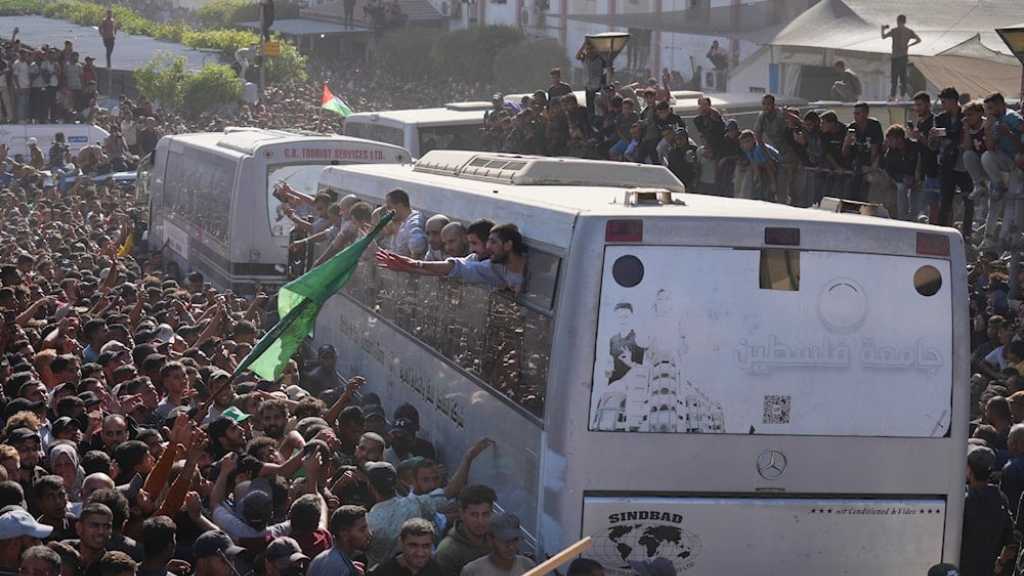Dick Cheney, Architect of Post-9/11 American Wars That Killed 4.5 Million People

By Ivan Kesic, Press TV
Richard Bruce Cheney, who died on November 3, 2025, at 84, leaves behind a legacy as the ruthless architect of America’s post-9/11 wars, which killed 4.5 million people and displaced over 38 million others, as per a study by Brown University.
He will be remembered as a vice president whose pursuit of unrestrained power, defense of torture, and deception over Iraq’s non-existent weapons of mass destruction [WMDs] made him both the embodiment and the author of the darkest chapters in modern militarized US foreign policy.
The death of Cheney closes the chapter of one of the most destructive forces in modern American statecraft, an architect of empire whose legacy is a litany of catastrophe: a war of aggression waged on false pretenses, a global torture regime and a doctrine of limitless executive power that bent the Constitution to its breaking point.
From the corridors of Washington to the secret torture chambers across the world, Cheney operated with a singular, ruthless conviction, systematically exploiting the tragedy of 9/11 to unleash a pre-ordained project of American hegemony.
He was a radical bureaucrat who legalized war crimes, a CEO who privatized conflict for corporate profit, and a vice-president who engineered a shadow presidency to serve a vision of power so absolute that it ensured the bill for his actions—measured in trillions of dollars, hundreds of thousands of lives, and a deeply compromised national soul—would be paid for generations
Apprenticeship of power
Cheney’s journey was not one of charismatic public appeal but of quiet, relentless accumulation of power and influence. Born in Lincoln, Nebraska, in 1941 and raised in Casper, Wyoming, his early years were unremarkable, even rocky—flunking out of Yale and receiving two drunk-driving arrests. But he found his calling in the mechanics of government.
Under the tutelage of Donald Rumsfeld in the Nixon and Ford administrations, Cheney absorbed the doctrine of a powerful, centralized executive.
As Gerald Ford’s Chief of Staff, he witnessed what he viewed as the dangerous erosion of presidential authority in the post-Watergate and post-Vietnam era. This experience forged a core tenet of his worldview: that congressional and judicial oversight could be a fatal handicap in a dangerous world.
His tenure as a Congressman from Wyoming and later as Secretary of Defense for George H.W. Bush further solidified his reputation as a shrewd and duplicitous operator.
He oversaw the devastating 1991 Iraq War, with a clear objective and exit strategy. In a telling moment, he argued against marching on Baghdad to topple Saddam Hussein, warning it would lead to a “quagmire.” It was a position of opportunism he would dramatically reverse a decade later.
The interlude between governments was spent as CEO of Halliburton, the oilfield services giant. This period, observers note, fused his ideological belief in American primacy with a corporate understanding of its strategic and economic applications.
Under his leadership, Halliburton subsidiaries engaged in controversial deals with Libya, Nigeria and Saddam’s Iraq.
They traded in defiance of US sanctions, did business through offshore cutouts, and paid $180 million in suspected bribes to win a Nigerian gas contract, blurring the lines between national interest and corporate profit, and setting the stage for future conflicts of interest.
Shadow presidency
The 2000 election returned Cheney to power as George W. Bush’s running mate, but he was no ordinary vice president. He hand-picked himself for the role and then engineered the vice presidency into a power center unprecedented in American history.
He embedded his staff across the federal bureaucracy, controlled the flow of information to the president, and positioned himself as the administration’s principal voice on national security and foreign policy matters.
The attacks of September 11, 2001, were the catalyst for which his entire career had been a preparation. From a secure bunker, he authorized fighter jets to shoot down hijacked airliners, an astonishingly grim demonstration of his readiness to wield ultimate power for petty interests.
The so-called “global war on terror” became not just a military campaign but a constitutional project for Cheney and his legal counsel, David Addington.
They championed the theory of the “unitary executive,” which held that the president, as commander-in-chief, held near-absolute power in matters of national security, unconstrained by Congress or international law.
This philosophy underpinned a series of radical policies, including the “One Percent Doctrine.”
Cheney articulated that if there was even a one percent chance of a catastrophic threat, it must be treated as a certainty. This doctrine justified preemptive action based on possibility rather than evidence.
The war-mongering US administration, with Cheney as its chief advocate, also redefined torture through legal memos to permit “Enhanced Interrogation Techniques” [EITs] including waterboarding, sleep deprivation, and confinement in small boxes.
Cheney personally authorized the waterboarding of Khalid Sheikh Mohammed 183 times. He defended these methods as necessary, despite the subsequent Senate Intelligence Committee report finding them brutal and ineffective.
Furthermore, the CIA established a network of secret prisons overseas, known as “Black Sites,” beyond the reach of any court or the Red Cross, where detainees were subjected to these EITs.
From a legal and human rights perspective, this period represents a deliberate dismantling of post-WWII norms. Human rights organizations have consistently argued that these policies constituted war crimes, a stain on America’s moral standing.
Drumbeat for Iraq War
If the torture program was Cheney’s shadow war, the public invasion of Iraq was his crusade. He became the administration's most forceful and credible advocate for war, leveraging his reputation to make a case that would later prove to be built on a foundation of falsehoods and exaggerations.
He relentlessly advanced a connection between Saddam and Al-Qaeda—a link the 9/11 Commission later concluded did not exist.
Most notoriously, he repeatedly asserted, with unwavering certainty, that Iraq possessed weapons of mass destruction. “Simply stated, there is no doubt that Saddam Hussein now has weapons of mass destruction,” he told the VFW in August 2002.
This was not mere salesmanship; it was a conscious attempt to shape intelligence. Cheney and his staff made frequent trips to the CIA, pressuring analysts and creating the Office of Special Plans to bypass skeptical intelligence agencies.
A British government memo from July 2002, the “Downing Street Memo,” captured the mood: “the intelligence and facts were being fixed around the policy.”
When no WMDs were found, the war’s core justification collapsed. The devastating war, which Cheney had once warned would be a “quagmire,” cost 4,431 American lives, hundreds of thousands of Iraqi civilian deaths, and trillions of dollars in taxpayers' money.
It destabilized the region and catalyzed the rise of Daesh terrorists. For many, the Iraq War stands as one of the most catastrophic strategic blunders in American history, a decision for which its chief architect never expressed remorse.
War crimes and accountability
The question of legal accountability has followed Cheney longer than any other. Human rights organizations have named him personally liable for authorizing torture.
Estimates of Iraqi civilian deaths range from 200,000 to more than 600,000, while millions were displaced, cities destroyed, and a generation traumatized.
As vice president, Cheney shaped every phase of the occupation: from the dismantling of Iraq’s army—fueling insurgency and civil war—to the privatized rebuilding effort that enriched corporations like Halliburton, his former employer. He dismissed calls for accountability, insisting that history would vindicate him.
The Kuala Lumpur War Crimes Tribunal convicted him in absentia in 2012. Yet, he traveled the world with impunity, protected by a US government that refused to ratify the Rome Statute of the International Criminal Court and an Obama administration that chose “forward-looking” unity over prosecution.
His infamous 2006 hunting accident, in which he peppered a companion with birdshot and then delayed informing the press, became a metaphor for his entire career: a man who inflicted collateral damage and operated by his own rules of engagement.
Unrepentant architect and his final acts
In his final years, Cheney witnessed a profound irony. The Republican Party he helped shape—steeped in the neoconservative belief in robust executive power and international intervention—was transformed by the populist, “America First” nationalism of Donald Trump.
In a remarkable coda, Cheney, alongside his daughter Liz—who was exiled from the GOP for her work on the January 6th Committee—became a vocal critic of Trump, whom he called “a coward” and “the greatest threat to our republic.”
He endorsed Kamala Harris in 2024, a final, stark repudiation of the political forces he had, in part, unintentionally unleashed.
Dick Cheney never apologized. He never expressed a doubt. He believed the “dark side” was a necessary frontier for “defending civilization.”
His legacy is therefore not one of simple villainy, but of a profound and enduring paradox: a man who wielded power with the stated goal of protecting American democracy, yet in doing so, championed policies that corroded its moral and legal foundations.
He was the ultimate architect of power, and the bill for the world he built is a ledger history is still tallying: illegal wars, hundreds of thousands of graves, a global torture archipelago, and a precedent that the most powerful can act with the utmost certainty, and never be held to account.



